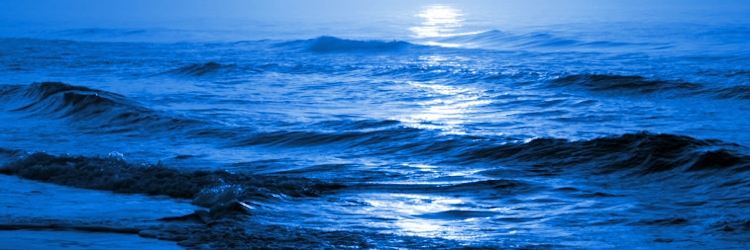Harmful Algal Blooms
In Full Bloom

Author
Lisa Ayers Lawrence, Virginia Sea Grant, Virginia Institute of Marine Science
Grade Level
9-12
Lesson Time
1- 1.5 hrs.
Objectives
- List 3 kinds of harmful phytoplankton and ways that these algae impact organisms.
- Compare concentrations (percentages) of G.breve over time.
- Analyze the severity of HAB blooms.
Harmful algal bloom (HAB), Phytoplankton, Diatoms, Dinoflagellates, Cyanobacteria
Materials Required
1997-1998 graph, 1998-1999 graph, 1999-2000 graph
Credits
NOAA's Coastal Services Center Harmful Algal Bloom Forecasting (HABF) Project Summary
Compare concentrations of harmful algal blooms using NOAA's Coastal Services Center Harmful Algal Bloom Forecasting (HABF) Project data. Introduction
Harmful algal blooms can impact the health of marine organisms and humans in a number of ways. If a toxin-producing species (of which there are only a few dozen) is ingested by a marine organism, those toxins can be passed through the food web affecting fish, marine mammals and even humans. Some of the illnesses contracted this way include amnesiac shellfish poisoning (ASP), ciguatera fish poisoning (CFP), diarrhetic shellfish poisoning (DSP), neurotoxic shellfish poisoning (NSP), and paralytic shellfish poisoning (PSP). Other ways that HABs can impact organisms are:
- Predation - Example: Pfiesteria piscicida eats through the skin of a fish causing lesions which can lead to death by Pfiesteria or by secondary infection.
- Injury or Irritation - Example: Spiny diatoms like Chaetoceros species can get stuck in fish gills causing irritation and eventually death.
- Starvation - Example: Aureococcus, which causes brown tides, ingested by a scallop can inhibit the scallop's ingestion of other food.
- Anoxia - Example: After harmful algal blooms die, large numbers of the dead algae decompose which requires oxygen and causes anoxic conditions.
Harmful algal blooms have always occured, and affect almost all coastal U.S. waters. Scientists are concerned that HABs are increasing in number and diversity causing not only health problems but economic problems to the tune of $100 million a year for fisheries and tourism. And while some of the increase in number of blooms each year may simply be a result of improved detection methods, human influences including exotic species introduction through ballast water, global warming and increased nutrient runoff may also be big contributors. To aid in the early detection of harmful algal blooms, some states like South Carolina have a citizen volunteer phytoplankton monitoring program.
In this data activity, we will take a look at Florida blooms of the red tide-causing dinoflagellate Karenia brevis (formerly Gymnodinium breve) to see if these HABs are increasing in frequency or severity. K. brevis usually blooms in Florida in the fall or winter and causes fish kills, shellfish poisoning, and respiratory and skin irritations in humans. In 1996, K. brevis caused the death of about 10% of the Florida manatee population.
Data Activity
For this activity, visit the Florida Fish & Wildlife's Red Tide Status Page to view current K. brevis concentrations in southwest Florida. Using the data found on the staus site, and comparing it to this chart, answer the following questions:
1. What is the current prevalence of K. brevis? Is there a red tide?
2. Is the prevalence of K. brevis increasing or decreasing over time?
3. How about the severity of the blooms?
4. From your observations, do you think that the K. brevis blooms in southwest Florida are worsening?
5. How might you verify this? (Continued monitoring, increased sampling).
6. What could you do to prevent or lessen the impact of these blooms?